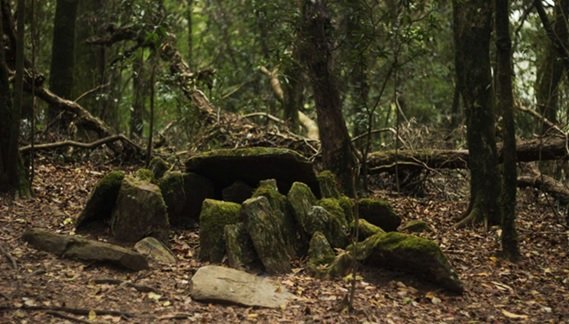
Bill D. Moyers, former White House Press Secretary once interviewed writer Joseph Campbell where he asked him, “What happens when a society no longer embraces a powerful mythology?”. Campbell’s striking response was, “Young people who don’t know how to behave in a civilized society. I imagine that 50% of the crime is by young people in their 20s and early 30s that just behave like barbarians. The news of the day, including destructive and violent acts by young people who don’t know how to behave in a civilized society.” Campbell went on to emphasize that when we don’t imbibe myths into our lives, we tend to make our own set of arbitrary rules, we have our own initiations and form our own set of morality which may or may not get along with the rules of the society.
Myths or knowledge systems and beliefs of indigenous people have a great functional value apart from the obvious religious connotations. While myths serve varied purposes in societies across the world, the example of the forest myths of the Khasi community from the state of Meghalaya makes for a most fascinating study on the harmony between, man, myth and nature. In the Khasi community of Meghalaya myths and folklores that continue to be passed to younger generations have led to a sustained relationship between man and his natural surroundings. It is pertinent to note that Meghalaya today has 80 per cent of its area under green cover- over thrice the Indian average.
The ethnocultural traits of the Khasis have been greatly influenced by their natural surroundings. For the Khasis, the forest is a home, a source of food, a game sanctuary as well as an abode of worship. In the Khasi custom, the earth with all its bounty is referred to as “Meiramew” which means “Mother Earth”. Meiramew is a combination of land, forests, rivers, and streams as Khasis do not separate these elements.
According to the Khasi myths, they came to their present abode from heaven. Embodied in a myth, Ki Khanatong U Hynniewtrep (Tales of the Seven Huts), the Khasis had their abode in heaven and earth was just a field where they came down to cultivate crops. The Earth and Heaven were connected by a huge tree. An evil force somehow managed to entice the people to cut the tree. Henceforth, the people of seven clans out of the said sixteen clans who cut the trees were punished to dwell on the earth.
A similar story states that in the olden days when mankind lived in purity and innocence, heaven and earth were connected by a ladder. But later, when malice found a refuge in the human heart, the ladder was removed. Since then, the ones that remained below are known as Ki Hynniew Ha Tbian meaning The Seven Below. This particular legend credits a hillock Sohpetbneng (meaning the navel of Heaven) in the Shillong-Guwahati trunk road in Ri Bhoi district as the site where the ladder is said to have existed.
While one may easily disregard these myths for being ‘unscientific’, it is because of these myths that Meghalaya has been able to preserve several sacred groves in the state through the centuries that otherwise would have perished because of unrestrained human wants. Cherrapunji for instance, houses some of the most well preserved sacred groves in the country, operating under highly stressed environment conditions with poor soil, rapid slopes and torrential rainfall. This phenomenon is to be understood through the fact that the sacred groves at Nongkrem and Mawphlang are believed to house the indigenous deities of Lyngdoh and the Syiem clans.
The sacred sites not only represent the simple faith of the people but also an appeal for social and ecological prudence amidst the pressures of human needs. Myths are the repositories of indigenous wisdom and values. Granted that since these myths were passed orally, they were subjected to layers of social filters but they still manage to serve their original purpose of shedding a light on the lives and wisdom of the people in the past.
What can be inferred from the above is that myths and legends are based on a set of social, ecological and normative principles constructed out of the collective experiences of a community. While the world faces the challenge of balancing the symbiotic relationship between man and environment, the Khasi community has been an example in accomplishing this harmony. Such myths call for a reckoning and need to be preserved for future generations of the inheritors of this glorious land.
However, no aspect of our world is oblivious to the ill effects of modernization. While many other indigenous communities of India have suffered the immense erosion of their traditional beliefs, the Khasis have been able to resist it to a great degree. However, with the advent of Modernity and proselytising Christianity, the people now tend to view these myths and tales as mere superstitions. Such an attitude not only takes away their sanctity but also harms the bonds of interdependence between man and nature. Similarly, with the arrival of modern education, the indigenous method of learning has been put on the backburner even in the tribal communities. The renowned culture of Khasis where the elders sit by the bonfire and narrate legends to the younger generation is slowly vanishing. The traditional beliefs are being discarded in favour of borrowed scientific knowledge at best and of agnosticism at worst and folk tales are being replaced with ill-adopted western fairy tales. As a consequence, the ground reality now shows a steady deterioration in the quality and density of sacred groves, as well as an alarming increase in deforestation.
It is time for a concerted effort to be made to uphold the traditional beliefs of indigenous communities of India and fuse them with the modern education system. India, known around the world as a land of legends and folklore has a special duty towards its past that will serve its future. It is clear that in the folk stories and legends of our people, lay not just our cultural heritage but also the fate of our incredible natural inheritance.





Wonderful article.
👌
There seems to be a lot of research behind this article. It is very informative and eye opening. Would love to read more on these lines. Great work!
Nice food for thought! But not every myth is worth fighting for , but the mythology you present creates an incredible argument! People in the early times knew the importance of instilling fear in order to conserve “mother nature”
Quite important subject which needs attention and understanding of the Indian youth. Also, all myths are not necessarily good for the society but yes we should be smart enough to save the ones good for our ecosystem. Nicely written.
I absolutely love the writing style of this piece! I can tell from the direct writing style that serious research has been done beforehand and I love reading articles that actually manage to convey information instead of just decorating the article with synonyms!! Very informative and intriguing, and I hope this makes people realise how diverse India is when it comes to cultures that adorn it! Well done Kuldeep Badlani!!
Beautiful and informative!